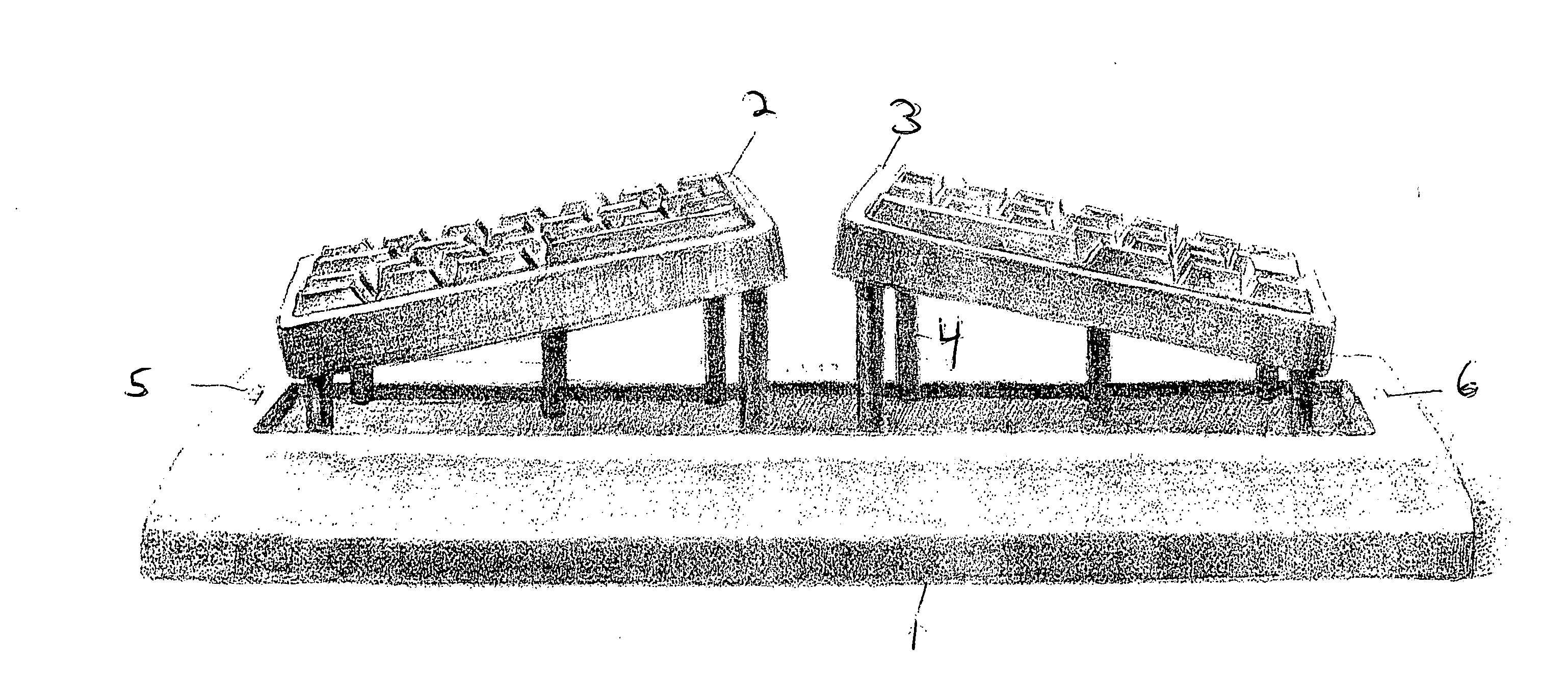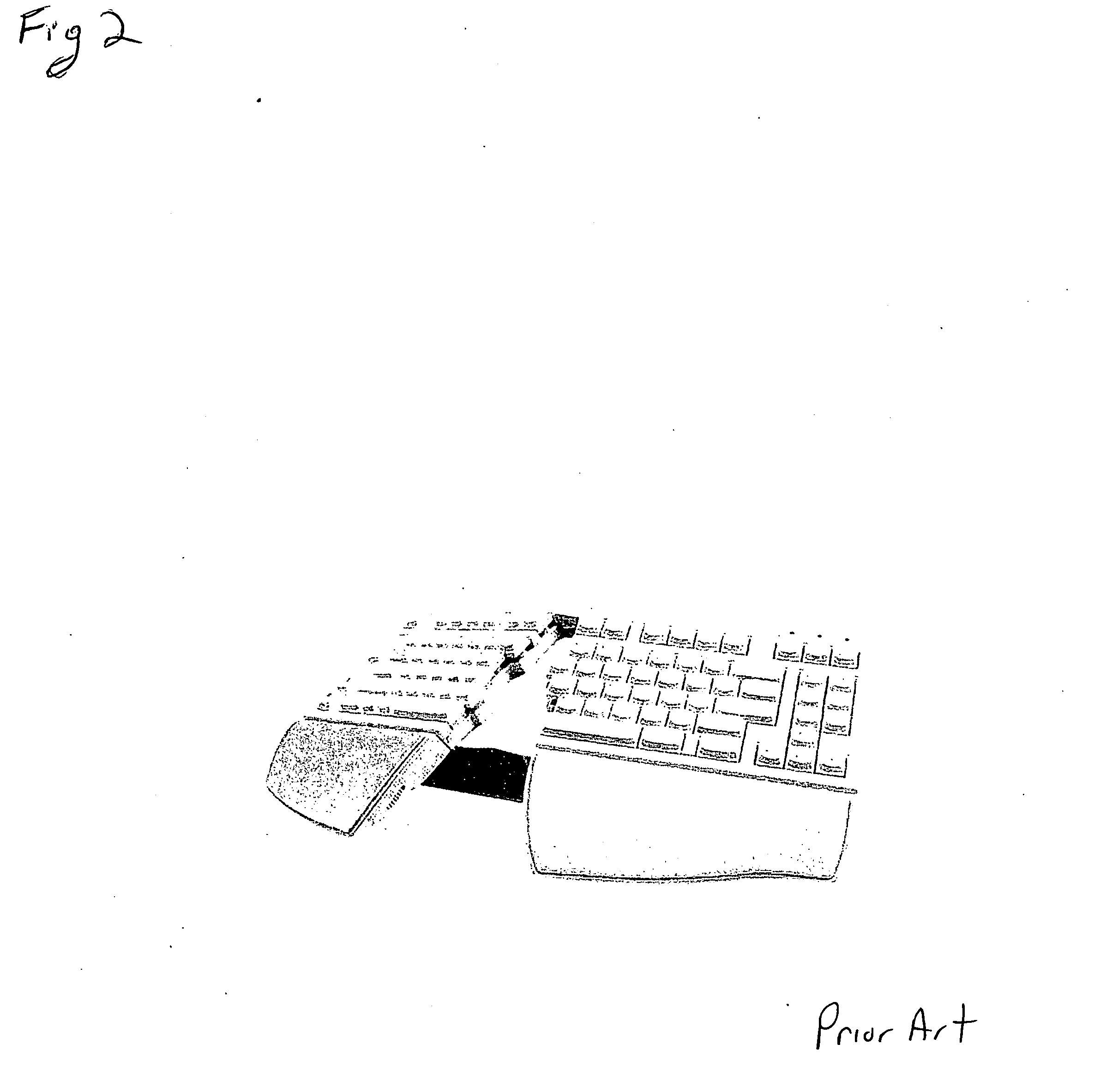While such highly efficient and compact
workstation environments have greatly increased worker productivity and efficiency, the burdens imposed upon the worker in a
workstation environment, which essentially limits the ranges of motions,
muscle group changes, postural changes, and rest needed, by the worker.
This environment has given rise to substantial risks of injury and other problems to the users of these workstations.
In particular, the tendency for such work stations to utilize a restricted seating portion for the worker and the manipulation of densely compacted controls such as a
computer keyboard or the like has given rise to a variety of maladies such as the well known
carpal tunnel syndrome as well as a variety of musculo-skeletal ailments generally referred to as
repetitive motion syndrome.
One of the most common examples of such problems is the painful injury which often afflicts those operating computer keyboards for extended periods of time as the repeated high speed limited motion of the
computer operator's fingers in a fixed keyboard position which gives rise to the
carpal tunnel syndrome type injury.
This type of device still limits needed variation in position and other adaptations for the user that could alleviate or avoid injury.
This type of device still limits needed variation in position and other adaptations for the user that could alleviate or avoid injury.
This device also lacks user guidance to optimal positioning and limits
adaptation to user only initiated positioning.
This type of device still limits needed variation in position and other adaptations for the user that could alleviate or avoid injury.
This device also lacks user guidance to optimal positioning and limits
adaptation to user only initiated positioning.
This type of device still limits needed variation in position and other adaptations for the user that could alleviate or avoid injury.
This device also lacks user guidance to optimal positioning and limits
adaptation to user only initiated positioning.
While this keyboard may move it is not interactive, it lacks the ability to make regular specific movements based on
workload or time spent working.
This causes unnecessary interruptions at random intervals to the worker without any guarantees of benefit.
It also limits adaptation to movement only and no customization of such movement is available.
It is clumsy and difficult to use.
The keyboard is unable to guide the user to position it optimally.
This type of device still limits needed variation in position and other adaptations for the user that could alleviate or avoid injury.
This device also lacks user guidance to optimal positioning and limits adaptation to user only initiated positioning.
It offers no way to guide the user to the best keyboard positions.
There is no adaptation at all to address repetition a key component to
carpal tunnel syndrome and repetitive stress injuries.
This type of device still limits needed variation in position and other adaptations for the user that could alleviate or avoid injury.
This device also lacks user guidance to optimal positioning and limits adaptation to user only initiated positioning.
There is no attention or adaptation for different sized users, different injuries or environments.
This keyboard fails to address most of the needs of carpal tunnel and repetitive
stress injury sufferers.
In fact, it does nothing to address the chief cause of carpal tunnel and repetition strain injury, repetition itself.
 Login to View More
Login to View More  Login to View More
Login to View More 


